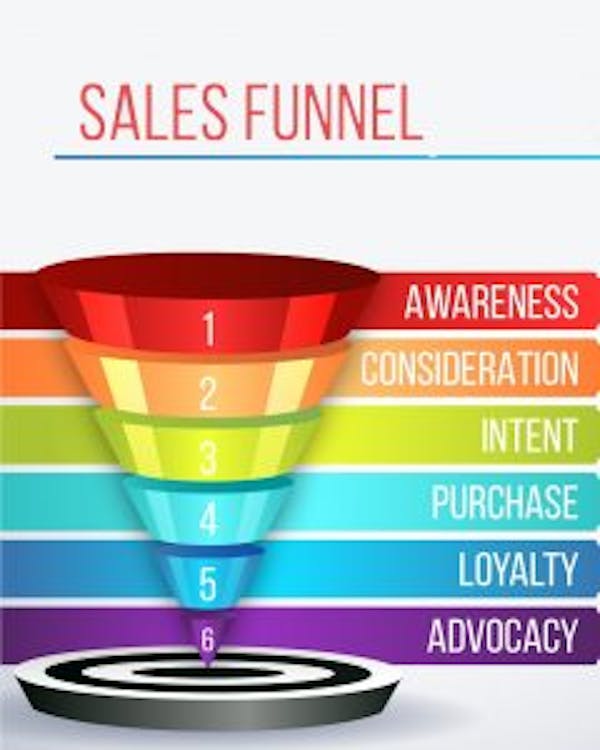
Lead Generation - The beginning of the journey
07-Mar-2020
Jim Bentley
In my last post I discussed a way to determine your gross revenue targets and the number of sales and sales leads needed monthly to achieve those targets. Knowing this number is critical, but it is even more important to understand how to generate those leads. Whether you are a service or product related industry you must have a continuous flow of leads into your sales funnel.
What is a sales funnel? The picture at the top of this post is of a sales funnel. Anyone who is doing business has one – they may not know it or understand what it is. As you can see from the picture, the top of the funnel is the entry point and is the act of bringing awareness to your service or product. Each time you make someone aware of you or your products you are generating a lead and placing them in the top of your sales funnel.
Once in the funnel you should begin the process of educating, nurturing and converting the lead into a customer. Some will convert while others will drop out. There are many factors which determine how many turn into customers and how many drop out. These range from the quality of the lead, to product match, price, quality of education and nurturing etc. etc. But if you cannot educate them, share price with them or show product fit you have zero. So it all starts with lead generation.
Anybody can set up a business. You can take care of all the legal paperwork, licensing requirements, get business cards made, a phone number etc. and presto you have a business. The problem is unless you are generating interest and converting that interest into sales you will not be a business for long. Leads and the corresponding conversion of those leads into buyers is the lifeblood of any business. Yours included!
There are a lot of lead generating methods. Selecting the right ones can be challenging. Some may fit a particular industry well, others may fit your personal skill set or knowledge base better or some may provide the best ROI. You should consider these factors when developing your strategic lead generation plan. I break them down into three categories.
1–Traditional offline–this includes print, radio and tv ads, and direct mail.
2–Traditional active–this includes trade shows, conferences, live events, telemarketing and referrals. As you can see in these methods, you are actively soliciting or engaging prospective buyers while in the traditional offline methods listed above you develop an ad and wait for people to respond.
3–Online–online lead generation is the broadest and most complex category. This includes e-mail, social media, content marketing (blogs, webinars, infographics, memes, videos, white papers etc.), online directories, rating sites like Yelp or Angies list, website/SEO, PPC (pay per click) or AdWords, Facebook ads, affiliate marketing, etc.
Is your head spinning yet? Deciding where to put your resources can be overwhelming. It freezes many business owners in place because they lack the expertise to decipher all this information and are afraid to use resources on the wrong thing. Other business owners will dabble in many areas just hoping to hit on something that works.
Successful businesses select a few methods and focus their available resources on those methods. They are careful to measure the results and ROI and refine the methods that are working. They replace the methods that test out poorly and select new methods for testing. The goal is to find the most effective means to bring in the required number of leads to hit your revenue targets. As you find success you can begin raising your revenue goals.
So ask yourself the following questions: What methods are you using to generate leads? Are they producing sufficient numbers? Can you improve your numbers using current methods? Can you expand and use additional methods to generate more leads?